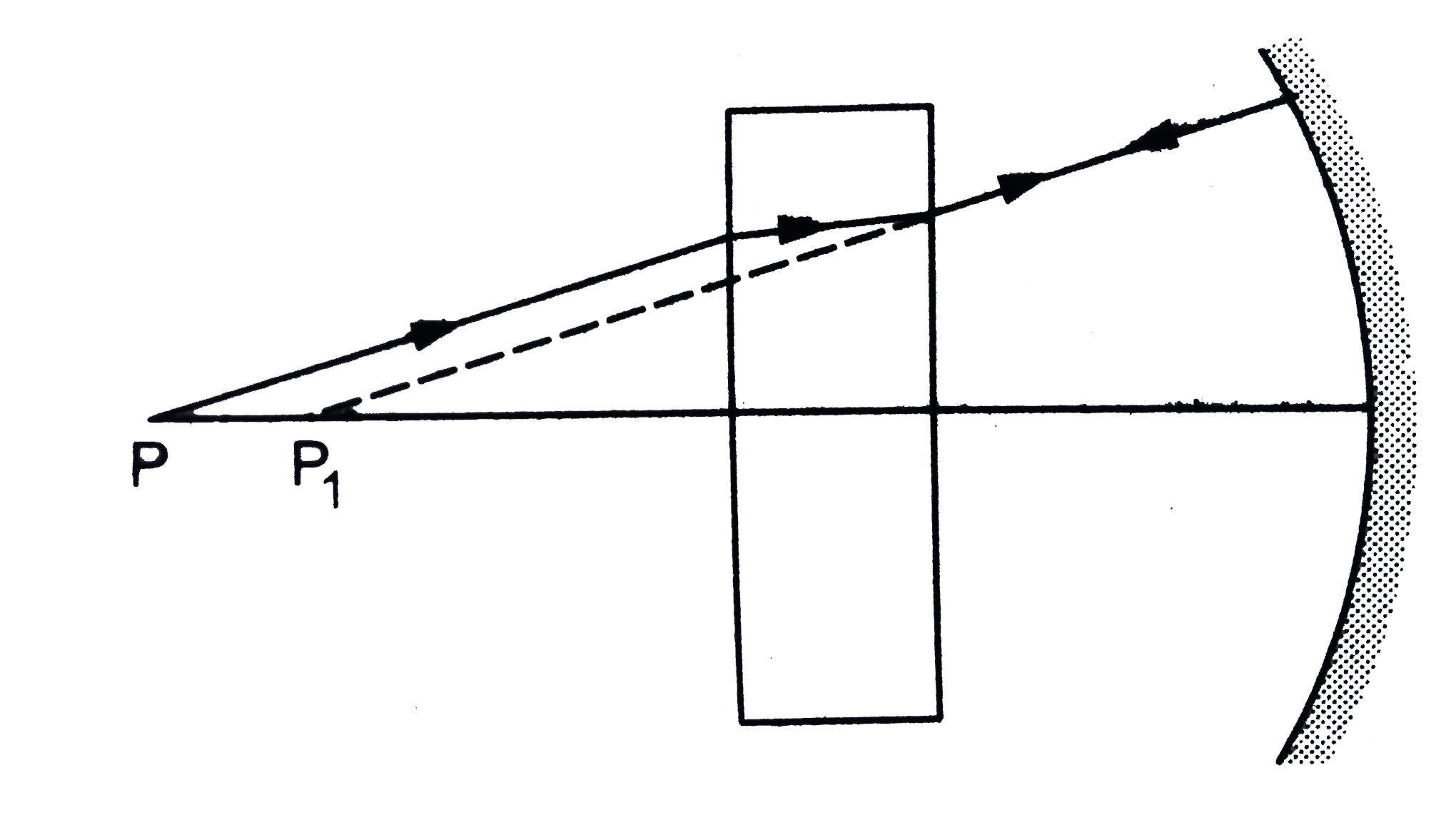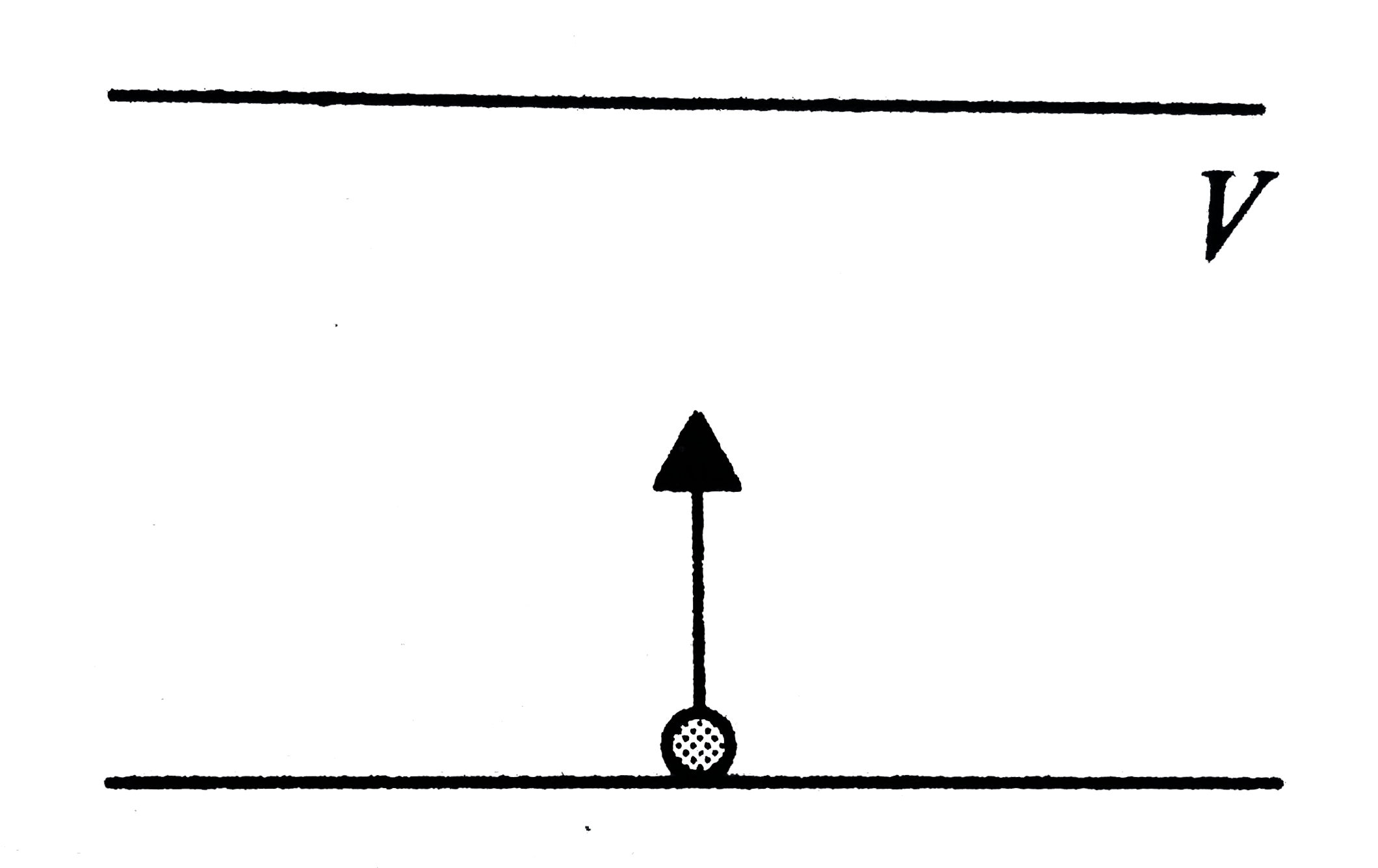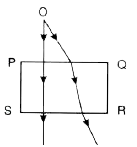Assertion: Therefore is a glass slab between Ram and Anoop. Then, Ram appears nearer to Anoop as compared to the actual distance between them.
Reason: Ray of light starting from Ram will undergo two times refraction before reaching Anoop.
If both Assertion and Reason are true and the Reason is correct explanation of the Assertion.
If both Assertion and Reason are true but Reason is not the correct explanation of the Assertion.
If both Assertion is true, but the Reason is false.
If both Assertion is false but the Reason is true.
The correct Answer is:B
To solve the given question, we need to analyze the assertion and the reason provided:
Step 1: Understanding the Assertion
The assertion states that when a glass slab is placed between Ram and Anoop, Ram appears to be nearer to Anoop than he actually is. This phenomenon occurs due to the refraction of light as it passes through the glass slab.
Step 2: Understanding the Reason
The reason given is that the ray of light starting from Ram undergoes two times refraction before reaching Anoop. This is indeed true because light refracts when it enters and exits the glass slab.
Step 3: Analyzing the Refraction
When light travels from a medium of lower refractive index (air) to a medium of higher refractive index (glass), it bends towards the normal. When it exits the glass slab back into air, it bends away from the normal.
1. First Refraction: As light enters the glass slab, it bends towards the normal.
2. Second Refraction: As light exits the glass slab, it bends away from the normal.
Step 4: Lateral Shift
The overall effect of these two refractions results in a lateral shift of the light rays. This shift makes Ram appear closer to Anoop than he actually is. The apparent position of Ram is shifted towards Anoop due to the bending of light.
Step 5: Conclusion
While both the assertion and reason are true, the reason does not correctly explain why Ram appears nearer to Anoop. The appearance of Ram being closer is due to the lateral shift caused by the refraction of light through the glass slab, not merely because the light undergoes two refractions.
Final Answer
Both the assertion and reason are true, but the reason is not the correct explanation for the assertion.
---
The assertion states that when a glass slab is placed between Ram and Anoop, Ram appears to be nearer to Anoop than he actually is. This phenomenon occurs due to the refraction of light as it passes through the glass slab.
The reason given is that the ray of light starting from Ram undergoes two times refraction before reaching Anoop. This is indeed true because light refracts when it enters and exits the glass slab.
When light travels from a medium of lower refractive index (air) to a medium of higher refractive index (glass), it bends towards the normal. When it exits the glass slab back into air, it bends away from the normal.
2. Second Refraction: As light exits the glass slab, it bends away from the normal.
The overall effect of these two refractions results in a lateral shift of the light rays. This shift makes Ram appear closer to Anoop than he actually is. The apparent position of Ram is shifted towards Anoop due to the bending of light.
While both the assertion and reason are true, the reason does not correctly explain why Ram appears nearer to Anoop. The appearance of Ram being closer is due to the lateral shift caused by the refraction of light through the glass slab, not merely because the light undergoes two refractions.
Both the assertion and reason are true, but the reason is not the correct explanation for the assertion.
Topper's Solved these Questions
- REFRACTION OF LIGHTBook:DC PANDEY ENGLISHChapter:REFRACTION OF LIGHTExercise:Level 1 Objective
Explore 38 Videos
- REFRACTION OF LIGHTBook:DC PANDEY ENGLISHChapter:REFRACTION OF LIGHTExercise:Objective Questions
Explore 1 Video
- REFRACTION OF LIGHTBook:DC PANDEY ENGLISHChapter:REFRACTION OF LIGHTExercise:Exercise 31.8
Explore 8 Videos
- REFLECTION OF LIGHTBook:DC PANDEY ENGLISHChapter:REFLECTION OF LIGHTExercise:Subjective
Explore 9 Videos
- SEMICONDUCTORSBook:DC PANDEY ENGLISHChapter:SEMICONDUCTORSExercise:Subjective
Explore 12 Videos
Similar Questions
A 20kg monkey has a firm hold on a light rope that passes over a frictionless pulley and is attached to a 20kg bunch of bananas. The monkey looks upwards , sees the bananas and starts to climb the rope to get them.
(a) As the monkey climbs ,do the bananas move up , move down or remain at rest?
(b) As the monkey climbs ,does the distance between the monkey and the banana decrease, increase or remain same?
(c) The monkey releases her hold on the rope .What happens to the distance between the monkey and the bananas while she is falling ?
(d) Before reaching the ground , the monkey grabs the rope to stop her fall. What will happen to bananas ?
View SolutionAssertion (A) : The phase difference between any two points on a wave front is zero
Reason (R ) : Light from the source reaches every point of the wave front at the same time
View SolutionAn object is placed 21 cm in fron of a concave mirror of radius of curvature 20 cm.A glass slab of thicknes 3 cm and refractive index 1.5 is palced close to the mirror in the space between the object and the mirror. Find the position of the final image fromed. The distance of the nearer surface of the slab from the mirror is 10 cm.

View SolutionAn electron having charge e and mass m starts from the lower plate of two metallic plates separated by a distance d. If the potential difference between the plates is V, the time taken by the electron to reach the upper plate is given by
 .
.
View SolutionThe potential difference between two large parallel plates is varied as v = at, a is a positive constant and t is time. An electron starts from rest at t=0 from the plate which is at lower potential. If the distance between the plates is L, mass of electron m and charge on electron -e then find the velocity of the electron when it reaches the other plate.
View SolutionTwo cyclists,moving with equal speeds of 10 km/hr,are approaching each oher along a straight road.When the distance between them is 20 km a fly starting from cycle,keeps on flying alternatively from one cycle to the other.If the fly has a constant speed of 40 km/hr.Find the total distance travelled by the fly before the cyclists meet is.
View SolutionAssertion : Newton's rings are formed in the reflected system. When the space between the lens and the glass plate is filled with a liquid of refractive index greater than that of glass, the central spot of the pattern is bright.
Reason : This is because the reflections in these cases will be from a denser to a rarer medium and the two interfering rays are reflected under similar conditions.
View Solution(a) In Young.s double slit experiment using monochromatic light of wavelength 600 nm, interference pattern was obtained on a scren kept 1.5 m away from the plane of the two slits. Calculate the distance between the two slits. Fringe separation/fringe width was found to be 1.0 mm.
(b) When a fish is observed underwater at depth of 3 m appears to be at a depth of 2 m. What is the refractive index of water ?
View SolutionA ray of light travelling with a speed c leaves point 1 shown in figure and is reflected to point 2. The ray strikes the reflecting surface at a distance x from point 1. According to Fermat's principle of least time, among all possible paths between two points , the one actually taken by a ray of light is that for which the time taken is the least (In fact there are some cases in which the time taken by a ray is maximum rather than a minimum).
_S01_058_Q01.png)
Find the time for the ray to reach from point 1 to point 2.
View SolutionA point source of light O of single colour is seen through a rectangular glass slab PQRS. The paths of two rays, in and outside the slab, are shown in figure.

In the diagram, label the position I of the source O where it will appear when seen through the surface RS.
(ii) Does the source O appear to be nearer or farther with respect to the surface PQ ?
(iii) How does the shift depend on the thickness PS or QR of the slab?
(iv) Justify your answer in (iii) with the help of an appropriate ray diagram.
(v) For the same rectangular glass slab, which colour from the visible spectra (violet to red) will produce the maximum shift ?
View Solution